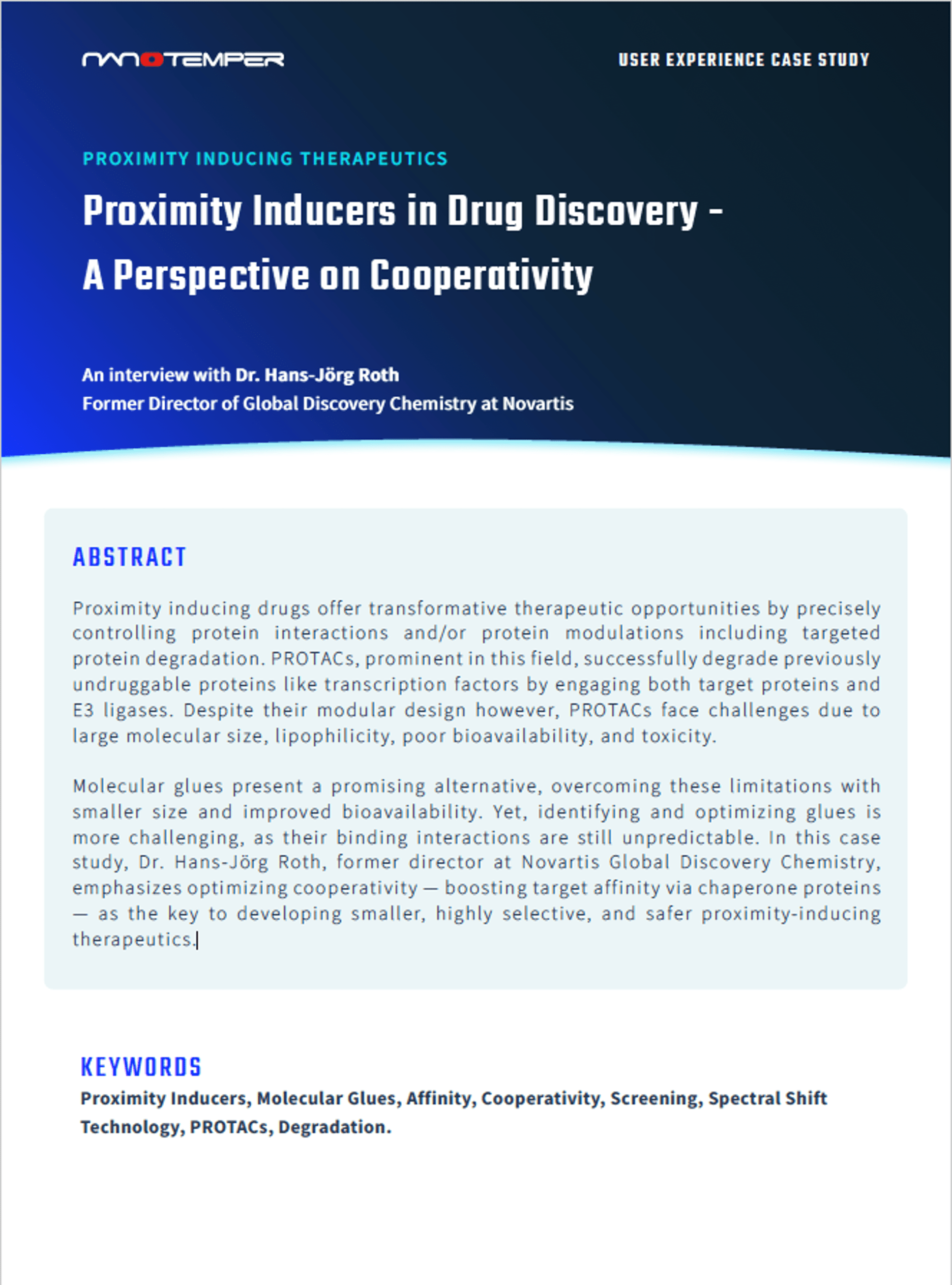
With PROTACs currently in the clinical and preclinical stages, they are making exciting progress towards successfully treating patients who have been waiting for effective therapies for certain types of cancer, neurodegenerative diseases, autoimmune diseases, and more. The targeted degradation of disease-causing proteins by PROTACs and other degraders promises to be an alternative modality to small molecule inhibitors, which present too many restrictions to be successful with many of the challenging targets (Learn more about what PROTACs are and how they work).
One advantage of PROTACs is their unique mode of action — the induced proximity of an E3 ligase and the protein of interest (POI) triggers the ubiquitination and then degradation of the POI by the ubiquitin-proteasome system (UPS).
Here are four reasons that make PROTACs a superior therapeutic approach.
1. PROTACs can bind anywhere on the protein of interest (POI) to bring together POI and E3 ligase to trigger ubiquitination
Inhibitors and competitors drug molecules are designed to negatively regulate the function of the POI by binding directly to its active site — also known as an occupancy-driven pharmacological model. In this model, the active site must be accessible, and the small molecule inhibitor must bind with high affinity. On the other hand, PROTACs are heterobifunctional molecules designed with a POI ligand — the warhead on the bifunctional degrader that binds to the POI — that binds to pretty much any available site. This means that the potential library of these ligands is much more extensive than that of active sites.
2. PROTACs don’t have to exhibit strong binding to the POI
Small molecule inhibitors developed with the occupancy-driven pharmacological model must bind to the POI with high affinity to effectively inhibit their target. The success of a PROTAC molecule is instead measured by its ability to form a transient ternary complex — bringing together the POI and E3 ligase — that triggers ubiquitination of the POI. In this scenario, POI ligands can display weak affinities, which is even a desired feature — as dissociated PROTACs can form additional ternary complexes, in a reuse-recycle-repurpose kind of model for the degradation of any remaining POI.
3. PROTACs aren’t affected by resistance mechanisms
Mutations in the active site of the POI that reduce the affinity of the small molecule inhibitors can arise, making the drug less effective. As explained in #1, these types of mutations don’t impact PROTACs effectiveness. Other mechanisms deployed to compensate for the effects of an inhibitor drug are gene amplification and protein overexpression — particularly for kinase inhibitors — where the cell responds by making more of the target protein to out-number the small molecule inhibitor. PROTACs’ catalytic mechanism of action is event-driven and substoichiometric, which means PROTACs can take care of the extra protein that the cells make.
4. By degrading the POI, PROTACs effectively eliminate all its functions
Many proteins have other functions besides their enzymatic activity, like serving as scaffolds or binding partners to other proteins. Inhibitors can only affect the enzymatic activity since they target the active site, leaving the POI able to perform its other functions. In contrast, PROTACs degrade the POI, effectively eliminating both the enzymatic and scaffolding function at once.
This list includes just some of the reasons that make PROTACs the modality that promises to deliver successful drugs for challenging targets. To learn more about PROTACs and how to design effective protein degraders, visit NanoTemper’s PROTACs resource center.












